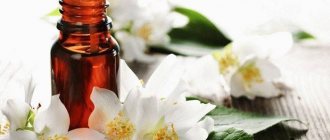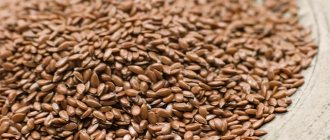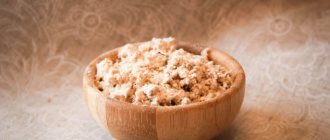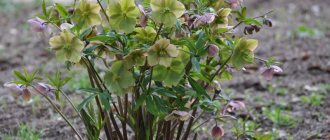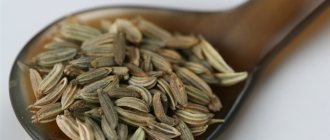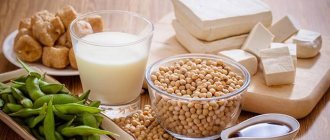Essential oils are natural aromatic compounds extracted from different parts of plants - tree bark, stem, leaf, flower, root or seed. They are the quintessence of the plant, as they contain all their biological benefits in concentrated form. In ancient times, distillation was seen as extracting the spirit and life force from a plant - so it often had religious and mystical meanings.
Typically, essential oils are extracted from the plant using steam distillation. There are other methods for their production, such as the use of cold press, distillation with water, the use of sorbents and selective solvents, but the use of steam is the simplest and most affordable way, widespread in today's industry.
The effect of essential oils is determined by the concentration of various chemical compounds in them, as well as the frequency of their use, method of use and dosage. The quality and purity of the product also has a significant impact on the effect.
Essential compounds have always been the most important components in cosmetology, perfumery, natural medicine, aromatherapy and much more. Natural essential oils are a real gift from nature , protecting the beauty of the face, hair, health and inner harmony. All the secrets of this amazing product barely fit in book volumes, but there is that necessary information, knowing which is more than enough for an ordinary inquisitive person seeking to get the maximum benefit from this natural nectar of health and beauty. You will learn the history, methods and features of use, and also find a universal table of the use of various essential oils for various purposes.
Methods of application
There are three main ways to use essential oils for health, beauty and good mood. By carefully familiarizing yourself with these methods, you can easily incorporate the use of plant essences into your daily routine.
Aromatherapy
Aromatherapy occurs through inhalation of a substance through the nose. When aromatic properties are manifested, the limbic system, which is anatomically close to the olfactory tract, is activated. The limbic system consists of the hippocampus (long-term memory), the amygdala (emotions), the hypothalamus (hormones), and the cingulate cortex (blood pressure, attention, and heart rate). Any substance used aromatically affects human emotions and physiology. Roughly speaking, essential oils enter the bloodstream through the inhalation of aromatic particles. There are several options for implementing aromatherapy:
- Using a diffuser
A diffuser, or, is a universal device with which you can purify the air in a room, protect yourself from harmful toxins and just bad odors. Using essential oils in a diffuser can be mood-altering, calming, or uplifting, depending on your individual needs. Today the market offers a huge selection of diffusers for any budget, with any properties and design. It is advisable to carefully study the characteristics and method of use before purchasing this device.
- Direct inhalation
If you don't have a diffuser, you can simply inhale any essential oil by placing a drop on your palm and rubbing thoroughly. Make a “mask” of your palms, covering your nose and mouth, and take a deep breath. Please note that some essential oils may have a too strong odor and irritate the nasal mucosa - in this case, do not bring your hands to your face, but inhale the aroma by placing your palms a few centimeters from your nose.
- Sprays
Another aromatherapy option is to dissolve the product in water and use it using a spray bottle. You can make sprays for clothes, bedding, and rooms with your own hands. Moreover, such natural air fresheners do not contain dangerous chemicals, and work no worse, and often better than store-bought ones.
External use
You can use essential oils by applying them directly to the body. Essential compounds tend to be quickly absorbed and penetrate into the blood through the skin, carrying substances to every organ of our body in a matter of minutes.
It is for this reason that it is recommended to mix essential oil with a base, regular vegetable oil - flaxseed, olive, sunflower, almond, coconut or jojoba oil are good bases. Using the prepared mixture locally, apply it only to those areas of the skin where it is needed. For example, you can rub such a self-made ointment into your temples for headaches, into your knees for bothersome joints, onto your lower abdomen for menstrual pain, etc.
It is very effective to rub the oil into the skin of your feet. The feet have many nerve endings that are responsible for the most important functions of the body. The essential oil is absorbed within just 40 seconds, and in 20 minutes it reaches all organs of the body. The following methods are also effective:
- rinsing (use a solution of a few drops of essential oil in a glass of water);
- hot compresses (essential oil is added to any vegetable oil in the correct ratio);
- baths;
- massage (diluted version).
Internal use
It is generally not recommended to use essential oils internally unless the packaging is marked accordingly. However, there are many certified food products containing essential oils - from dietary supplements to drinks that do not have irritating properties and are safe for ingestion.
Side effects and contraindications
Treatment with aromatic oils can cause various side effects and have contraindications:
- suffocation, shortness of breath, difficulty breathing;
- arrhythmia, increased heart rate;
- dizziness, headaches, tinnitus;
- redness, itching, allergic reaction.
Pay attention to the list of esters that, if dosed incorrectly, cause:
- poisoning Atlas cedar, basil, eucalyptus, cinnamon leaves, fennel (sweet dill), orange, lemon, hyssop, thyme, nutmeg;
- irritation black pepper, angelica, citronella, cinnamon leaves, ginger, orange, lemongrass, lemon, lemon verbena, cloves (any part), peppermint, nutmeg;
- photosensitivity bergamot, angelica, orange, lemon, mandarin, grapefruit, limette, petitgrain.
It is not always worth going to the hospital immediately if you experience minor symptoms of any disease. Medicines have a strong impact on the vital processes of the body, causing irreversible effects.
Alternative medicine, in the form of aromatherapy, can show you the miraculous effect of essential oils on a person. You may not believe it now, but you can only be sure by trying it yourself.
Lavender
This is one of the classic oils widely used in many fields.
Beneficial effect on the body
| How to useCan be used in its pure form:
|
Contraindications and restrictions
|
Geranova
This is an oil with a specific smell that not everyone can tolerate.
Beneficial effect on the body
| How to useDo not use for more than 3 weeks in a row:
|
Contraindications and restrictions
|
Mint
It is a fresh, cooling and invigorating aroma that lifts your spirits.
Beneficial effect on the body
| How to useUse in its pure form, without exceeding the dose:
|
Contraindications and restrictions
|
Allergy test
Never apply concentrated oil to your skin! Be sure to dilute it in the base before use.
Take 1 tablespoon of base oil. Any oil will do - olive, coconut, almond, etc. Add 1-2 drops of essential oil to it and mix. Apply the resulting mixture to the intact skin of the wrist and leave for 5-10 minutes. If no reactions appear at the site of application, such as redness of the skin or itching, then this oil is suitable for you.
IMPORTANT! Essential oils are not safe for ingestion and can cause severe poisoning even if only a small amount is ingested. Therefore, keep them away from children's eyes.
Combination of essential oils
Oils should be combined very carefully and only with a good knowledge of all their properties, adhering to the following rules:
- you cannot combine essential oils with opposite properties (for example, calming and stimulating the nervous system);
- You cannot combine more than 5 scents;
- lavender is universal and goes with all the others. Citrus, floral and coniferous fruits are combined with each other in their group, for example, lemon + orange;
- You need to combine oils taking into account the problem.
The best natural cosmetic oils for the face: liquid and solid oils, application features
As already mentioned, cosmetic oils can be in two states: liquid and solid.
"LIQUID" OILS:
- Easily maintains its “liquid” consistency
- The optimal temperature for them is from +20 to +25
- They are perfect for making “homemade cosmetics”
- They can be refined or left in their original form (not processed in any way).
- Can be the basis
- They are a kind of “transporters”, because they easily penetrate the skin, delivering useful substances.
OILS OF SOLID STRUCTURE:
- Able to harden and take on a “solid” appearance even at +30
- They are an excellent basis for making natural “homemade” cream or soap.
- Often used independently, without mixing with others
What types of cosmetic oils are there?
Basil
This oil has a mild spicy and invigorating aroma. It has long been considered “royal”.
Beneficial effect on the body
| How to useRecommended for use in dilution with base oil:
|
Contraindications and restrictions
|
